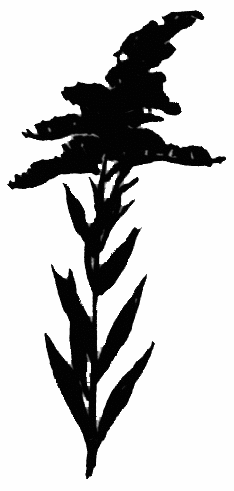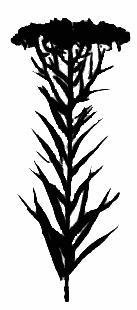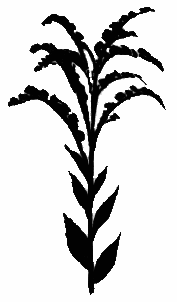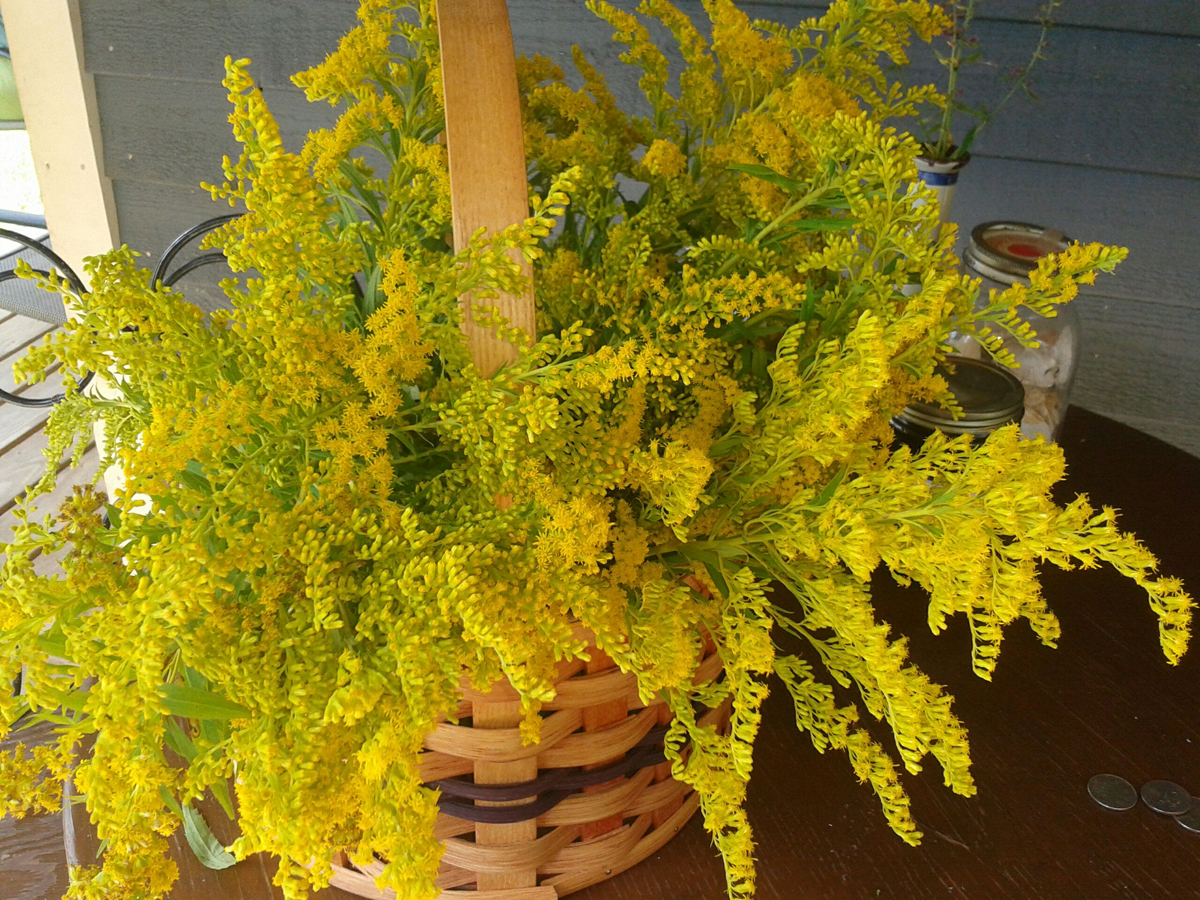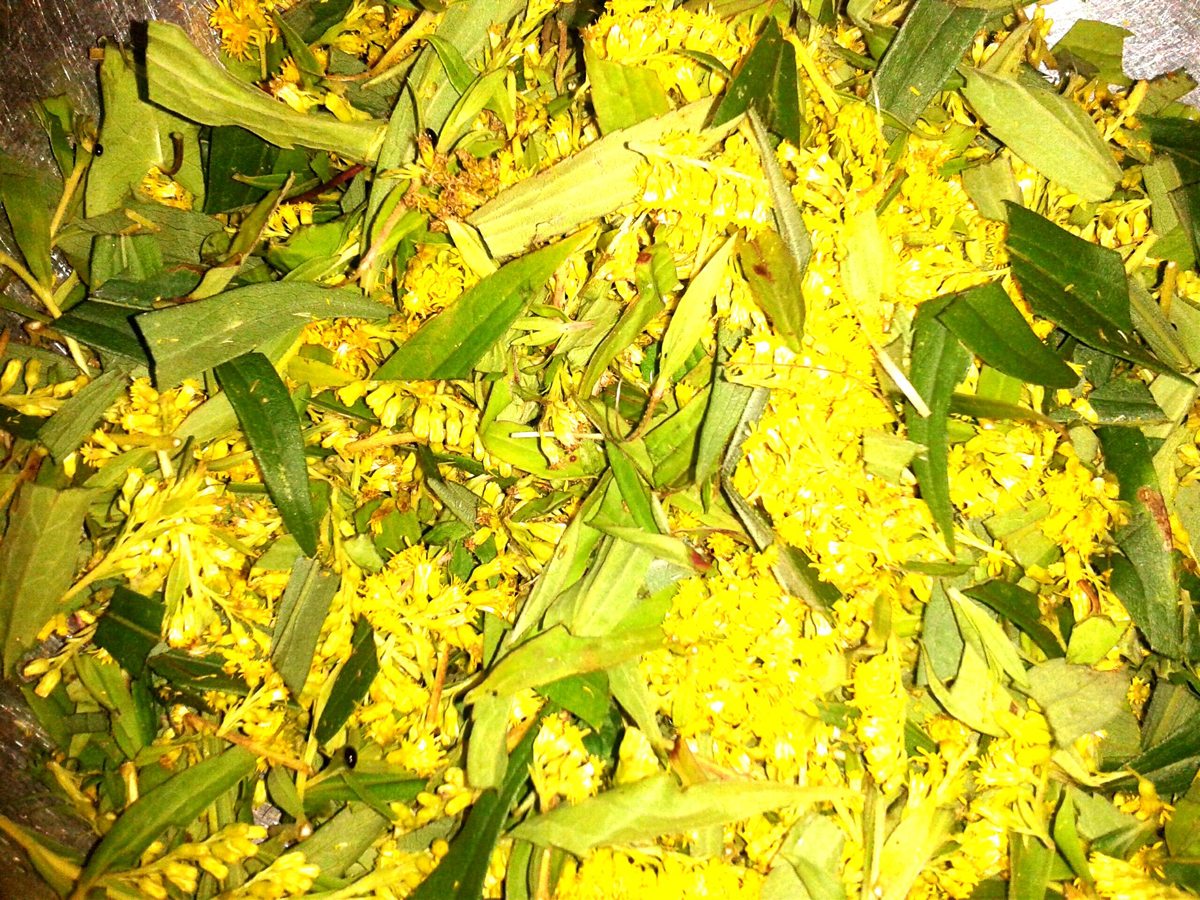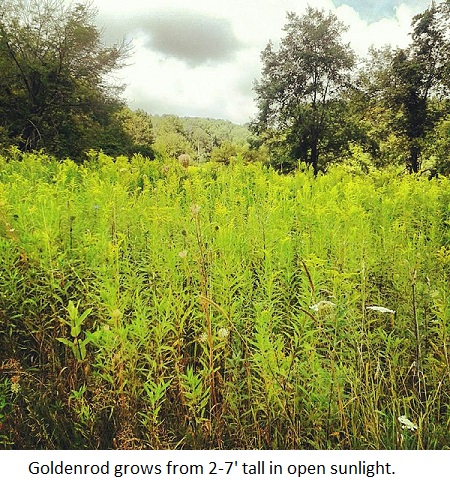It's Goldenrod Time
The wheel of the year is turning once again and the season of Fall is beginning her gentle emersion with first few leaves descending toward the turning Earth. There is a new chill wafting on the morning air and the Canada Geese have us in their flight path as they embark on this year’s journey South. These signs and more tell us that the times they are a-changing. Many of us, including myself, experience seasonal allergies in the late summer and early Fall that will continue until the first hard, killing frost. Growing up in the Northeast I was always told that my allergies could be attributed to the Goldenrod as these bright yellow flowers are in blossom everywhere we look right now. If I look out to my back field it appears as if there is a sea of yellow flowing flowers that stretches into eternity.
It seems only obvious that a field full of blowing flowers would be the allergy culprit of Fall, but in my herbal studies I discovered that Goldenrod is a highly medicinal plant and one of its main uses is for the runny, drippy, sinus symptoms related to these very allergies. Also, in studying the reproductive cycle of plants, Goldenrod is NOT wind pollinated and if you get up close and personal with a Goldenrod plant you will notice that there are always bees dipping down to draw out the rich, procreative pollen inside the flower. If a plant is not pollinated by the wind then there are not pollen grains blowing around in the air and into your sinuses. If you get even closer and look beneath the yellow canopy you’ll also see another, quiet, inconspicuous, yet volatile, smaller and, yes, wind pollinated green flowered plant called Ragweed. It is Ragweed that is responsible for many of our allergies and Goldenrod just gets the blame because she is so showy and bold. For more on Ragweed and seasonal allergies go to this previous post
Goldenrod(Solidago canadensis, spp.) is in the Asteraceae family and is one of the most prolific plants in Central New York and all of North America with 40-60 species existing worldwide. It flowers from July through September and is prevalent in open fields, along roadsides and any open space. All species can be used interchangeably with species differentiation being tricky as Goldenrod has mixed, matched and cross-bred to make infinite varieties. The most reliable key is to learn a few of the most common shapes such as (from left to right below)Plume-like, flat-topped, Elm-branched,Club-like or showy, and wand-like or slender. These forms each correspond to different species. Photos from A Field Guide to Wildflowers of Northeastern and North-Central North America by Roger Tory Peterson and Margaret McKenny
The Latin name Solidago is derived from Solidare or from the medieval Latin word soldago meaning to make whole or solid indicating its use as a wound healing herb. Also derived from Solidare is the English word solid that is related to the Old French word solide that goes back around to another Latin word, Solidus and means to make whole, undivided, firm and genuine. The Latin translation of Aster means star and symbolizes flowers that hold star-like qualities. The small, sparkly flowers of Goldenrod definitely remind me of twinkling stars and it was once thought that holding Goldenrod in the hand will reveal secret riches. It is also considered to indicate the location of springs which has proven to be true in my backyard. Our Goldenrod grows thickest right where our springs are found!
Energetics and Actions: Bitter, Pungent, Astringent, Cold, Dry, Aromatic, Slightly diffusive
Main constituents: Essential oil containing salicylic acid, tannins, saponins and flavonoids
Also known as: Woundwort, Blue Mountain Tea, Liberty Tea(used as an ingredient in the tea the colonists made themselves to replace English tea)
Parts used: Leaf and flower
Goldenrod is used as a digestive bitter and bitter it is. This bitter quality is present due to the tannins and the astringent action which tightens tissues making it especially useful for drying up mucus discharge from the sinuses during allergy season It can be taken as a tea, tincture or by simply chewing on a leaf. If I am starting to feel my allergies coming on I will often simply go outside, grab a Goldenrod leaf and chew it in my mouth for a bit. It is also known as a specific for cat allergies and I have used it repeatedly and always with success when I have visitors who are allergic to my cats. I learned this from Matthew Wood who says:
“I know of no better remedy for cat allergy. Boericke describes the characteristic eye symptoms: ‘red, injected, watery, stinging, burning.’ The eyes of the Solidago patient look like a person who has just gotten out of a swimming pool. There is a generalized redness of the conjunctiva. There are not the bright red blotches of Euphrasia, or the bloodshot appearance of Ambrosia. With this there is congestion, sneezing and running of the nose, redness and irritation of the skin. Solidago often has welts from allergy, a fact not mentioned in the literature I have seen.”
Goldenrod is also a diuretic and is nourishing and strengthening to the kidneys and entire urinary tract relieving edema, low-grade chronic Urinary tract infections, and kidney Qi stagnation. Basically, relieving dampness that is occupying space within the kidney.blocking the natural flux of fluids and reducing overall efficiency. It can prevent kidney stones and any other symptom that is associated with a lack of sufficient elimination of waste from the kidneys including hypertension, skin rashes, eczema, psoriasis and inflammation of the urinary tract.
One of my favorite uses for Goldenrod is as a poultice or liniment for bruises, strains, sprains or other soft tissue injury. It works like a charm as a pain reliever and anti-inflammatory while promoting deep and thorough healing by draining and eliminating excess fluid and dampness which allows for fresh, oxygenated and nutrient full blood and lymph to rejuvenate and repair damage. The image I have envisioned for this process is that of a flushing or cleansing that clears out congestion at the same time tightening and toning. This prepares the injured tissue to full access of its natural regenerative capacity. The toning action strengthens to create a flexible yet stable container for new, healthy cells.
These shining flowers that usher in the change of seasons and the darkening of our days are some of the years last blossoms to hold their small faces to the fading sun. These concluding light holders have an important use in alleviating Seasonal Affect Disorder, a common human reaction to small amounts of sunlight. Goldenrod carries the sun’s grace over the winter as an effective uplifter of mood, a nervine for chronic fatigue, nervous exhaustion, depression, stress, shock and disappointments. Particularly those that are correlated to a buildup of unprocessed emotions which, again, refers to that stagnation and heavy dampness that Goldenrod is so adept at releasing whether in our kidneys, respiratory tract or psyche.
Goldenrod grows in great abundance and can be gathered freely, although always with respect and thanks. The different species all contain similar properties and may all look alike at first glance, but as you get to know them better you will begin to observe the subtle variations in not just form but taste and effect. New Mexico herbalist Kiva Rose has determined a few important species characteristics:
"Special consideration should be given to the variability of the flavors and scents within the great many spp. of Solidago. If you have multiple species near you (and you probably do) take the time to taste the leaf and flower of each kind, and get to know the subtle differences. The most aromatic tend to be more helpful for mood elevation, kidney problems and external use, while the more bitter or bitter/aromatic spp. are especially nice for digestive issues and the astringent/aromatic types are great for upper respiratory issues and general mucus membrane over-secretion. These type of subtleties apply to all herbs, but Goldenrod tends to be a great example of it because of the many spp. and sensory variances even within a single species or subspecies."
Dosage:
Tincture-2-4 ml 3x per day
Tea-1/2-1 tsp. of dried or fresh leaf and flower per 1 cup of boiling water steeped for 5-10 minutes. You may want to add honey to this as it will be bitter.
References and resources:
The Earthwise Herbal by Matthew Wood
The Energetics of Western Herbs by Peter Holmes




